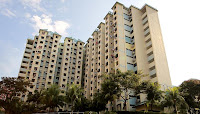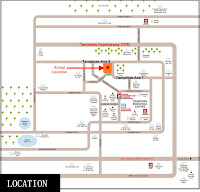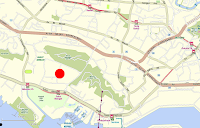RESIDENTIAL MARKET
Inflation next year likely to stay at
3.5-4.5%: MAS
Price
pressures next year will come from housing, cars, food and services, the
Monetary Authority of Singapore (MAS) said yesterday, with overall inflation
expectations unchanged at slightly above 4.5 per cent this year, and at 3.5 to
4.5 per cent in 2013.
The
main sources of inflation are similar to this year's but with one exception -
oil-related price pressures could be negligible as global economic weakness
causes oil consumption to fall below production next year.
In
its bi-annual macro- economic review, MAS said that inflation will likely come
from domestic sources rather than from abroad, with the two biggest components
being higher housing costs and car prices.
"Imported
inflation will generally be benign, although food prices will face short-term
upside risks from weather-related supply disruptions," it noted.
"At
the same time, domestic supply-side factors have become more binding. In
particular, persistent tightness in the labour market implies continuing
pressures on wages and hence the prices of consumer services."
Higher
imputed rentals on owner-occupied accommodation will add about 1.5 percentage
points to the Consumer Price Index (CPI) this year and the next.
HDB
rentals are relatively affordable and supply will be tight as a result of
measures introduced in July to curb the sub-letting of HDB flats by permanent
residents, MAS said.
The
significant increase in the stock of completed HDB units since 2010 will only
enter the leasing market in 2015 due to the five-year minimum occupation
period.
Meanwhile,
the stock of completed private residential units will rise further in coming
years, from more than 10,000 units this year to a peak of 25,000 units in 2016,
MAS said.
Tight
supply is also why car prices will add one percentage point to the CPI.
The
likely reduction to Certificate of Entitlement (COE) quotas in 2013 will cause
COE premiums to edge up, MAS said.
Meanwhile,
higher food prices and services costs are expected to contribute one-fifth of
inflation each.
June's
surge in the prices of food commodities, such as corn, wheat and soyabeans,
caused by the drought in the United States, will translate into higher food
prices towards the year-end and early next year, MAS said.
This
is because the commodities are used in animal feed and price effects take some
time to pass through. There will be a seasonal pick-up in demand towards the
end of the year.
There
are also upside risks if the El Nino weather pattern causes crop damage in
Asia.
MAS
expects wage costs to go up, especially for price-inelastic services, such as
healthcare and education.
Services
inflation is projected to be 3 per cent this year and slightly lower next year,
but still higher than the historical average of 1.5 per cent.
Core
inflation, a measure that strips out accommodation and private transport costs,
is expected to come in at 2.5 per cent this year.
It
will stabilise at between 2 and 3 per cent in 2013, but will be around 0.5
percentage point higher than its long-term average, MAS said.
Source: Business Times – 31
October 2012







-l.jpg)












